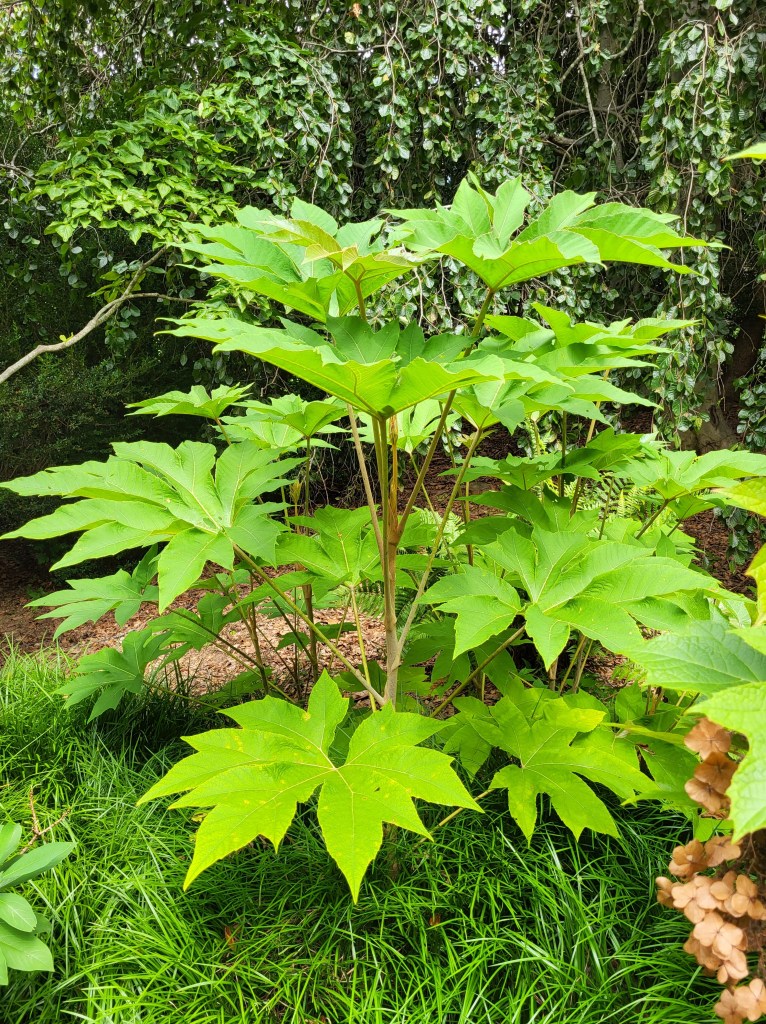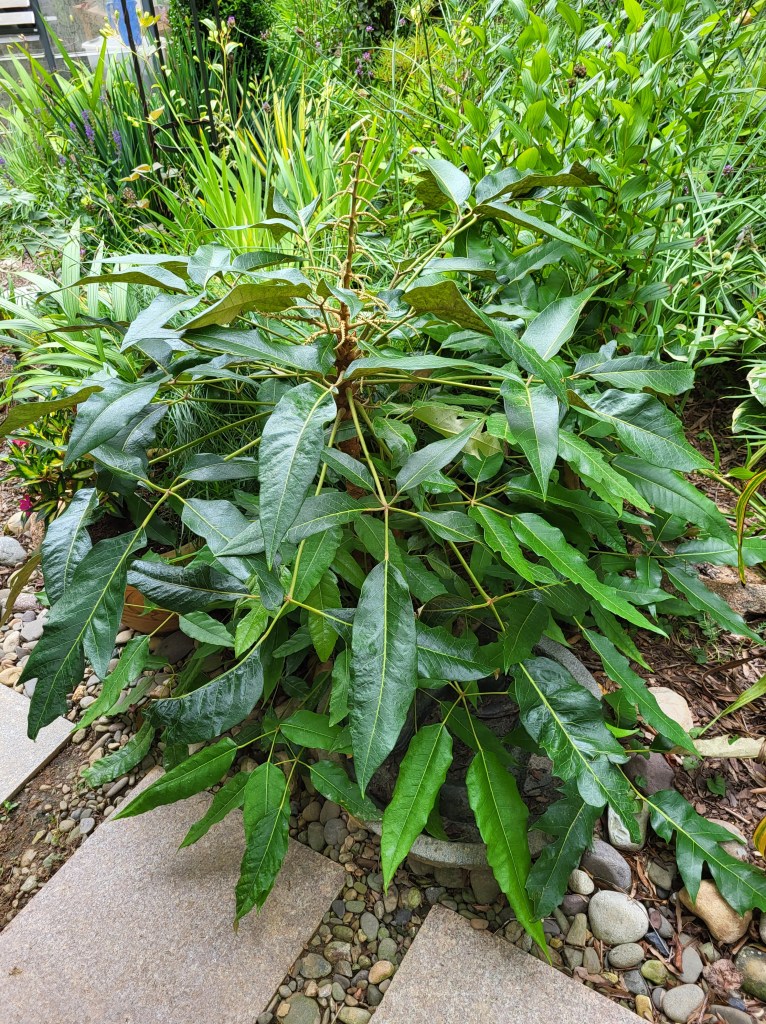Barbara and I would ask our young sons, ‘how big are you?” Time and again, the answer was proudly “So Big”, and of course now they are long out of the house and married (and rather large as people go).
I am quite pleased, though I did almost nothing except plant the castor bean (Ricinus communis, below) seedling provided by our youngest son into dry ground. A year ago, with little thought (as usual), a seedling was planted in damp ground where it struggled to grow to knee high by summer’s end. With the understanding that any idiot should be successful with castor bean, planting in the opposite condition, in bone dry soil beside the greenhouse, has brought the opposite, positive result.

This year’s castor bean is nearing ten feet in this extremely dry summer, with leaves nearly identical in size and appearance to the Japanese Rice Paper plant (Tetrapanax papyifera ‘Steroidial Giant’, below). As partial repayment, and as down payment on next year’s dark leafed castor bean seedling, I’ve potted one of the many root suckers of the tetrapanax. Jake’s garden is much smaller, a pollinators’ paradise with so many more flowering perennials than here, but I’ll let him figure where it can be planted. Mine still has room to roam where a large ninebark (Physicarpus) faded as it became too shaded beside a wide spreading redbud that has been chopped to a fraction as the top heavy tree leaned to pull its roots from the soil.

Adding tender and not quite cold hardy plants seems to be a shared trait of obsessive gardeners, which, of course, I am without a doubt. But, beyond stretching the limits of climate, I am familiar with a number of gardeners with preferences for huge leaves. I also belong to this club.

While far less than ideal, a clump of the cold hardy banana, Musa basjoo (above), has been planted at the back edge of the garden. Here, it is exposed only to the midday sun, so it’s off to a slow start, but there was nowhere else it could go. But, it is sheltered from the wind, so the big leaves should not become tattered.

Leaves of the variegated leaf fatsia (Fatsia japonica ‘Spider’s Web ‘, above) are small by comparison but large enough to evoke the tropical feel. Knowing this only as an indoor plant, I was surprised to find that fatsia is cold hardy to below ten degrees (Fahrenheit). In three mild winters with no cold protection, it flowers in late autumn and shows no damage in part sun.

With smaller leaves, but with wider familiarity as an indoor plant, schefflera (Schefflera delavayi, above) has easily survived three winters without protection. It is considered the most cold hardy of the scheffleras, so now I’m curious to try the next hardiest. I know, this goes on forever.

With mild winters becoming the norm, I’ve decided that two canna lilies (Canna ‘Bengal Tiger’, above) will now overwinter in the ground rather than being dug and stored in the garage. The digging is not a huge chore, but I’m curious to adapt to our changing climate and to stretch the limits of what can be grown.